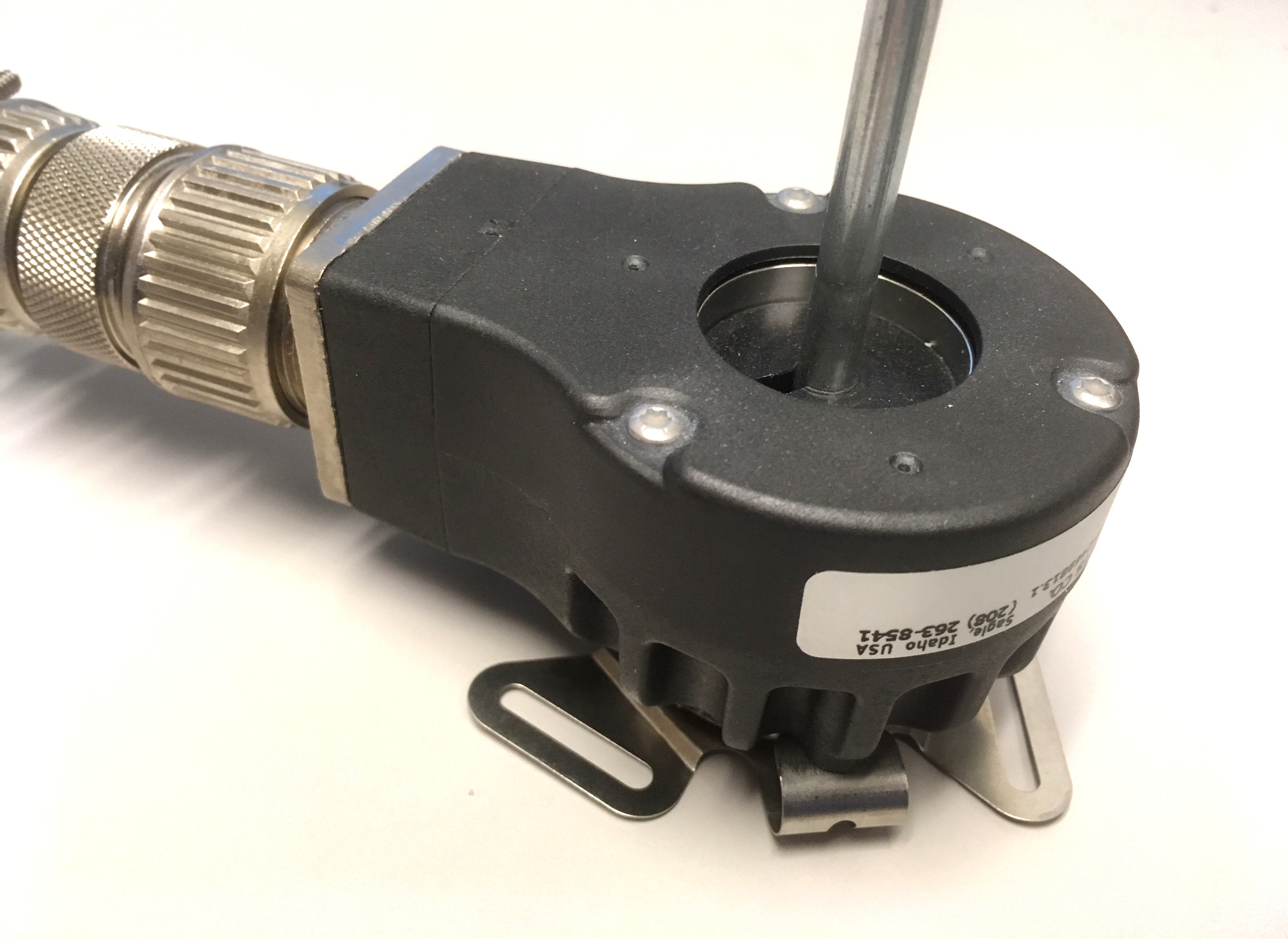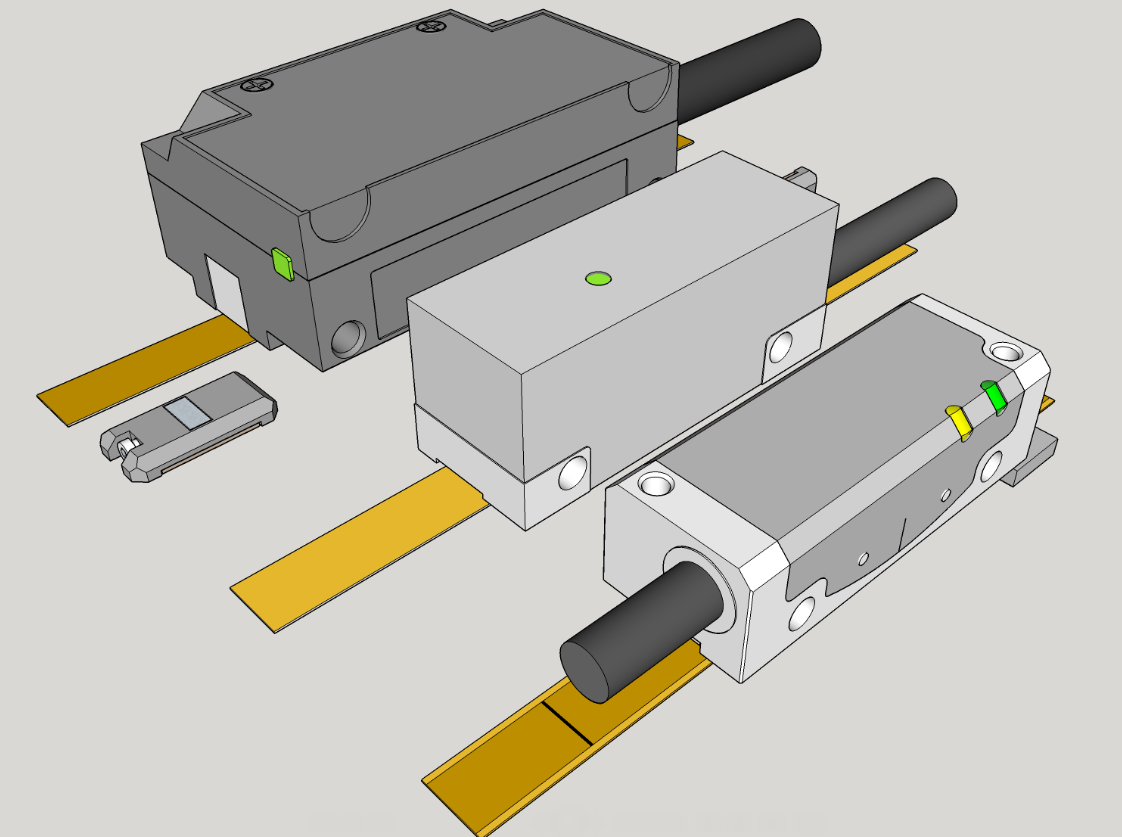|
Encoder (position)
An encoder is a sensor which turns a position into an electronic signal. There are two forms: * Absolute encoders give an absolute position value. * Incremental encoders count movement rather than position. With detection of a datum position and the use of a counter, an absolute position may be derived. The position may be measured as either linear or angular position * Linear encoder, converts linear position to an electronic signal * Rotary encoder A rotary encoder, also called a shaft encoder, is an electro-mechanical device that converts the angular position or motion of a shaft or axle to analog or digital output signals. There are two main types of rotary encoder: absolute and increm ..., converts rotary position to an electronic signal See also * Encoder (other) {{Set index ... [...More Info...] [...Related Items...] OR: [Wikipedia] [Google] [Baidu] |
Absolute Encoder
A rotary encoder, also called a shaft encoder, is an electro-mechanical device that converts the angular position or motion of a shaft or axle to analog or digital output signals. There are two main types of rotary encoder: absolute and incremental. The output of an absolute encoder indicates the current shaft position, making it an angle transducer. The output of an incremental encoder provides information about the ''motion'' of the shaft, which typically is processed elsewhere into information such as position, speed and distance. Rotary encoders are used in a wide range of applications that require monitoring or control, or both, of mechanical systems, including industrial controls, robotics, photographic lenses, computer input devices such as optomechanical mice and trackballs, controlled stress rheometers, and rotating radar platforms. Technologies * Mechanical: Also known as conductive encoders. A series of circumferential copper tracks etched onto a PCB is used t ... [...More Info...] [...Related Items...] OR: [Wikipedia] [Google] [Baidu] |
Incremental Encoder
An incremental encoder is a linear or rotary electromechanical device that has two output signals, ''A'' and ''B'', which issue pulses when the device is moved. Together, the ''A'' and ''B'' signals indicate both the occurrence of and direction of movement. Many incremental encoders have an additional output signal, typically designated ''index'' or ''Z'', which indicates the encoder is located at a particular reference position. Also, some encoders provide a status output (typically designated ''alarm'') that indicates internal fault conditions such as a bearing failure or sensor malfunction. Unlike an absolute encoder, an incremental encoder does not indicate absolute position; it only reports changes in position and, for each reported position change, the direction of movement. Consequently, to determine absolute position at any particular moment, it is necessary to send the encoder signals to an '' incremental encoder interface'', which in turn will "track" and report the enc ... [...More Info...] [...Related Items...] OR: [Wikipedia] [Google] [Baidu] |
Linear Encoder
A linear encoder is a sensor, transducer or readhead paired with a scale that encodes position. The sensor reads the scale in order to convert the encoded position into an analog or digital signal, which can then be decoded into position by a digital readout (DRO) or motion controller. The encoder can be either ''incremental'' or ''absolute.'' In an incremental system, position is determined by motion over time; in contrast, in an absolute system, motion is determined by position over time. Linear encoder technologies include optical, magnetic, inductive, capacitive and eddy current. Optical technologies include shadow, self imaging and interferometric. Linear encoders are used in metrology instruments, motion systems, inkjet printers and high precision machining tools ranging from digital calipers and coordinate measuring machines to stages, CNC mills, manufacturing gantry tables and semiconductor steppers. Physical principle Linear encoders are transducers that exploit many di ... [...More Info...] [...Related Items...] OR: [Wikipedia] [Google] [Baidu] |
Rotary Encoder
A rotary encoder, also called a shaft encoder, is an electro-mechanical device that converts the angular position or motion of a shaft or axle to analog or digital output signals. There are two main types of rotary encoder: absolute and incremental. The output of an absolute encoder indicates the current shaft position, making it an angle transducer. The output of an incremental encoder provides information about the ''motion'' of the shaft, which typically is processed elsewhere into information such as position, speed and distance. Rotary encoders are used in a wide range of applications that require monitoring or control, or both, of mechanical systems, including industrial controls, robotics, photographic lenses, computer input devices such as optomechanical mice and trackballs, controlled stress rheometers, and rotating radar platforms. Technologies * Mechanical: Also known as conductive encoders. A series of circumferential copper tracks etched onto a PCB is used to ... [...More Info...] [...Related Items...] OR: [Wikipedia] [Google] [Baidu] |



